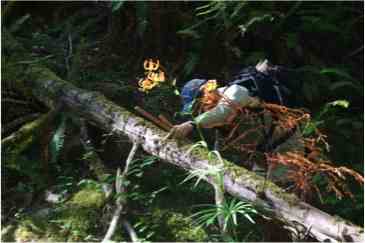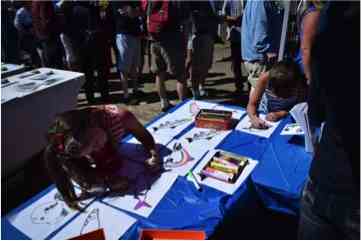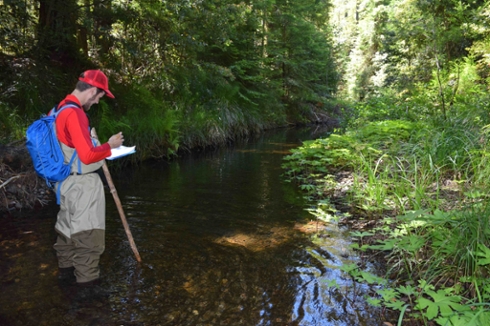Tags
"siegel"
Siegel Salmon Restoration Internship 2015: Garrett Linck, Part 3

Doug navigates his way under a downed tree while collecting salmon habitat data. Using CHaMP (Columbia Habitat Monitoring Protocol), we measured the length, width at 1/3rd, width at 2/3rds, and maximum depth, while distinguishing each stretch of the stream as either a riffle, scour pool, or non-turb.
Garret Linck is working on habitat conservation and restoration in the California wilderness as the Paul Siegel Salmon Restoration intern. For his final blog installation, he is sharing a series of photos from his experience.
Fort Bragg annually hosts “The World’s Largest Salmon Barbecue” as an effort to raise funds and awareness for Salmon Habitat Restoration in the area. While CHaMP was developed in the Pacific Northwest, conservation organizations have been actively working to extend efforts to Northern California to collect data and restore ideal stream conditions, especially in the aftermath of recent droughts. More information here: http://www.salmonrestoration.com/world_largest_b_3.html.

Continue reading Siegel Salmon Restoration Internship 2015: Garrett Linck, Part 3
Siegel Salmon Restoration Internship 2015: Garrett Linck

Garret Linck is working on habitat conservation and restoration in the California wilderness as the Paul Siegel Salmon Restoration intern. Read on for his first impressions and experiences.
Situated between Redwood groves and the Pacific Ocean, I have spent my first two weeks as the Paul Siegel Salmon Restoration Intern at the Mendocino Land Trust (MLT) traipsing through the rivers and forests of the North Coast. After a warm welcome from the crew at the MLT office in Fort Bragg, I drove over to Russian Gulch State Park and hauled my guitars, a few crates of vinyl, and my bicycle into the cabin where I will be living until August. From my doorstep, it is a brisk ten-minute walk to the Russian Gulch Headlands and Sinkhole—a mesmerizing locale where I’m frequently impressed by the force of the tide coming in and the abundance of wildlife. Nestled among the craters that perforate the cliff walls, Black Oyster Catchers cling to the walls as the strong wind ruffles their feathers.
On my second day, I jumped into Doug Kern’s (Big River Program Manager) green pickup with Nicolet (Trails & Stewardship Coordinator), and we meandered through the potholed roads of Jackson Demonstration Forest until we reach the nonsensically-named North Fork South Fork of the Noyo River. Doug and Nicolet each donned a pair of waders, which seemed to vie for the title of ‘most-waterlogged’. Doug’s quickly earned the title as evidenced by the continual fountain of water from his boots as he emerged from the river. I penciled in measurements of various habitat types as we traveled upstream, differentiating between Riffles, Scour Pools, and Non-Turbs (three different habitat classification units, denoting the depth, width, and velocity of the water). The terminology takes a bit of time to pick up on, but by the end of the day I was gaining confidence in both my understanding of the survey and my ability to scramble through thorns and underbrush. Three new pairs of waders should be arriving soon, and we will renew our efforts surveying the two-mile segment.
Continue reading Siegel Salmon Restoration Internship 2015: Garrett Linck
